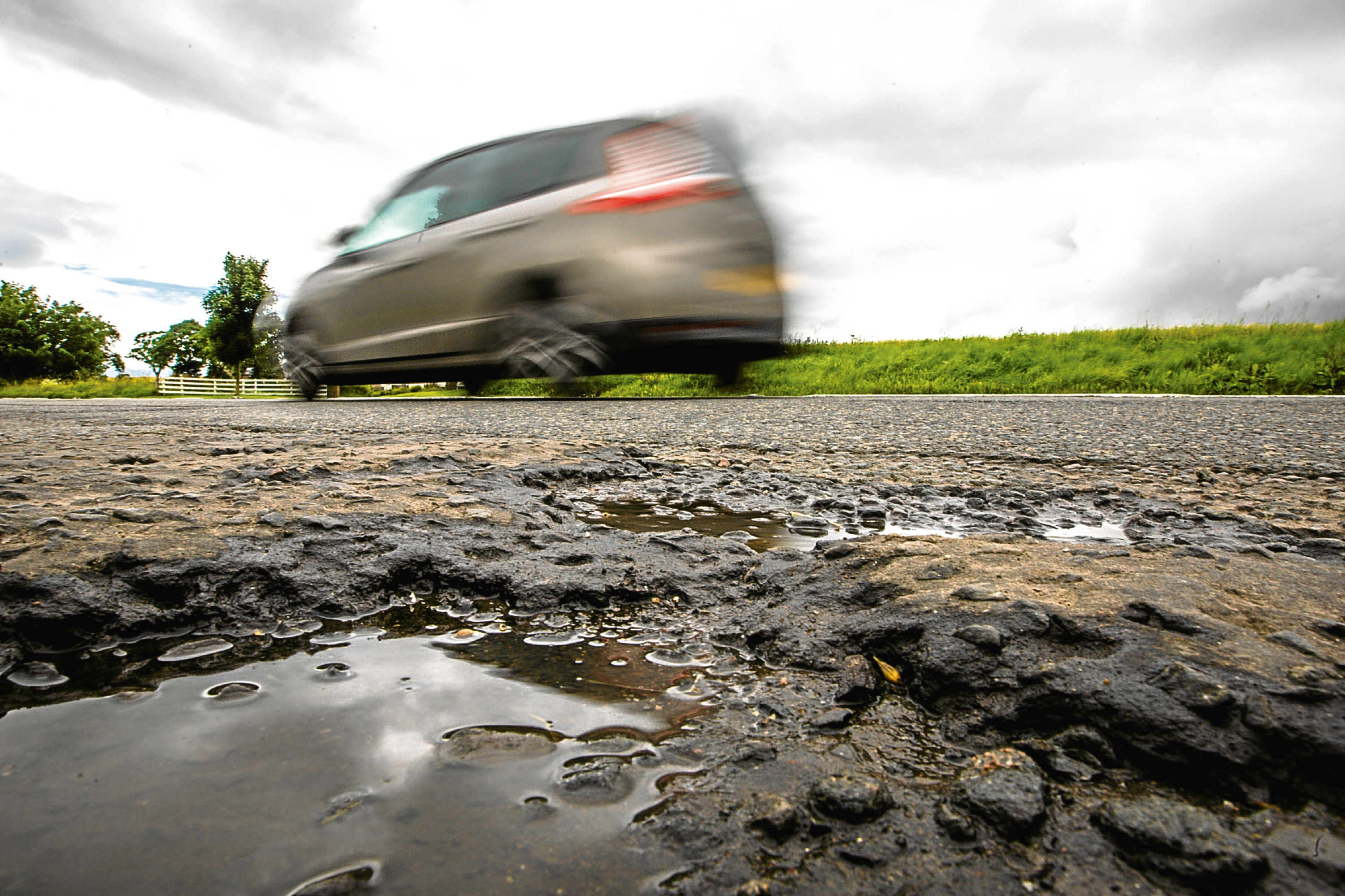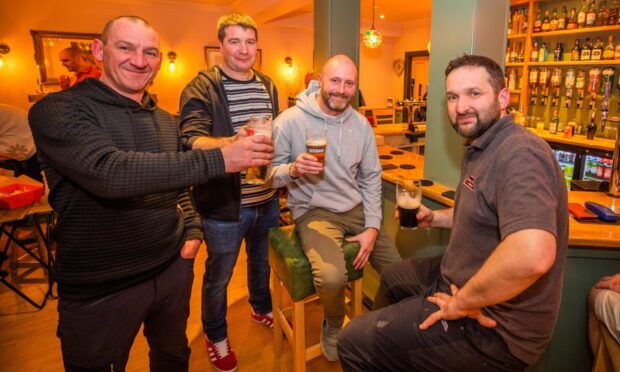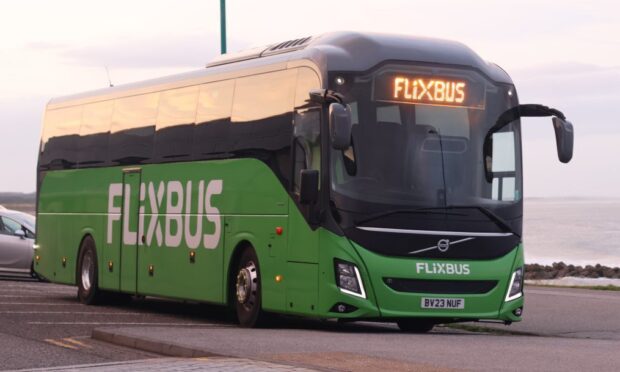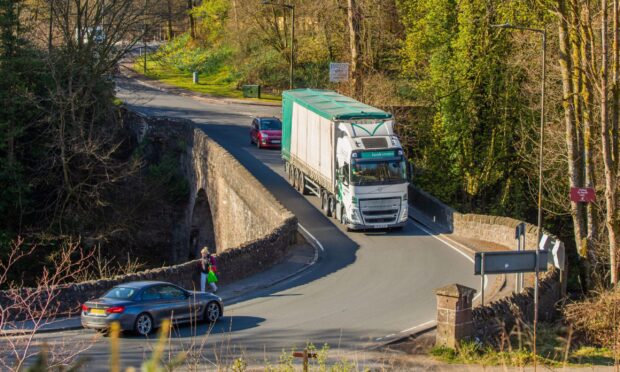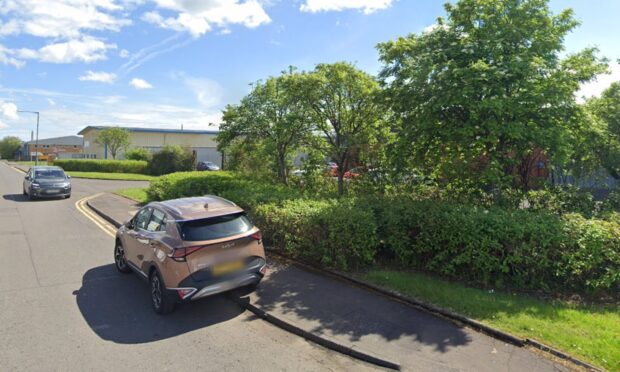Sir, – Your article on Scotland’s crumbling road infrastructure makes depressing reading, but neglects to mention those roads Fife Council no longer makes any pretence at maintaining.
I refer to unadopted roads, or as the council now refers to them, private roads.
In the 1970s, when local government was reorganised, harassed town clerks compiled lists of roads and streets, and if they missed one or two what did it matter?
Everyone knew the council looked after those roads anyway.
The problem is that in these straitened times the council doesn’t.
In Letham the street that serves half the village and the village school is apparently a private road and villagers are told that they must pay to repair the road and streetlights.
In Gateside it’s Old Town, the street that used to be the main road through the village.
In Dunbog it’s the road that serves the cemetery, at Rameldry it’s more than a mile of road serving dozens of houses and several farms and businesses, in Newburgh it’s a street in the middle of the town that has recently been repaired by a local firm with a fine community spirit.
Yet the people who reside on these streets and roads are expected to pay the same council tax as those living on any other road.
This situation has come about as a direct result of cuts in the roads maintenance budget, which has resulted in provision for unadopted roads being reduced from small to non-existent.
When Fife Council set its budget earlier this year the Conservative group called for more money for roads maintenance but was outvoted, a decision that should now be revisited.
Councillor Andy Heer.
Ward 18,
Howe of Fife.
Time to put a stop to Kenly
Sir, – Fife Councillors have unanimously said no twice to Kenly Wind Farm. Fife planners recommended refusal, with objections from community councils for Boarhills and Dunino, Kingsbarns, St Andrews – and hundreds of local people agreeing with them.
It seems very unfair that the people of the UK are forced into paying green tax on their energy bills to provide subsidies of £5.4 million for the university’s own hot water, plus contribute £2.7m or more a year (£54m over 20 years) for their private wind turbines.
St Andrews University’s planned wind turbines are far too close to hundreds of homes, where the health of children and adults will be put at risk from the noise and the 33kv cables buried just feet from their homes.
There has been no communications with the local people from university or 2020 Renewables except for a leaflet and two public meetings in 2011.
For the last two years, the university has sat on its hands and the local people believed they had seen what a disaster Kenly Wind Farm would be on this world-renowned beautiful landscape around St Andrews.
Hundreds of people around Kingsbarns and Dunino are hoping the right decision is made by councillors on August 10 at the meeting in County Buildings, Cupar, and that they will refuse any work from starting on this project.
This application would only benefit 2020 Renewables and the university and they would be forcing up everyone’s energy bills and pushing more people into poverty.
Deborah Pender.
Dunino,
St Andrews.
Farmers also love nature
Sir, – Once again, I was annoyed after reading the article from Mr Crumley (August 2) in which he says farmers and keepers would rather kill everything inconvenient that moves than give nature time and peace.
Mr Crumley, we are farmers, and most evenings my husband and I have a walk round the fields to look at the cattle, and it would not be the same if it wasn’t for the wildlife around us. We will see maybe a deer and of course all the different birds – that is, the ones a buzzard or sparrowhawk haven’t killed.
Why can’t you see, Mr Crumley, that there is good and bad in wildlife, just as there is with humans.
We think just as much, believe it or not, of our wildlife as you do, but we as farmers see at first-hand the devastation some species can cause, both to our own animals and to nature.
Pam Murray.
Wolflaw,
Forfar.
The Scottish Six should be in east
Sir, – As someone who was involved in television and radio in Scotland for more than 50 years, I fully understand the principle behind the proposal that the 6pm BBC News, currently originating in London, should become a Scottish-based hour- long programme originating from Glasgow.But why Glasgow? The Scottish Parliament is based in Edinburgh.
There is demographic evidence of a movement of Scotland’s population towards the east of the country.If there is to be a serious consideration of giving Scotland its own news hour from 6-7pm, then surely a central or eastern base ought to be considered.
Evelyn Hood.
The Barn,
Kirkhowe of Ruthven,
Blairgowrie.
Diageo support for campaign
Sir, – Following my letter in The Courier about Diageo and my proposal for a whisky heritage centre at Cameron Bridge, potentially to be linked to a revived Levenmouth Rail Link (August 2), Diageo kindly replied to my original letter – but their reply, via Ian Smith, head of Diageo Scotland corporate relations, unfortunately arrived a few days too late, after I contacted this news-paper.
Maybe they’ve been giving the idea a great deal of thought.Mr Smith sent the Levenmouth Rail Campaign his best wishes, and mentioned Diageo’s commitments in Scotland, including in Fife.
“While we won’t currently consider the suggestion of a whisky heritage centre in Fife, I hope I have been able to demonstrate our commitment and contribution to Fife”, Mr Smith adds.
I have passed his letter on to the Levenmouth Rail Campaign’s action committee, so they may make their own decisions and comments on its full content.
Alistair Aynscough.
Levenmouth Rail Campaign,
Northfield,
Colinsburgh.
Uncertainty of independence
Sir, – In her speech at an event hosted by the Institute for Public Policy Research, Nicola Sturgeon said, in the context of the UK departing the EU: “The outlook for the UK is uncertainty, upheaval and unpredictability.
“Do these words not also apply to the outlook for Scotland should there be a vote for independence?
In the case of an independent Scotland the degrees of uncertainty, upheaval and unpredictability would be significantly worse in that Scotland’s economy is faltering, including dramatically falling oil revenues, and we would have to apply to join the EU on presently unknown terms, but most likely including having to adopt the faltering euro as our currency.
GM Lindsay.
Whinfield Gardens,
Kinross.
Ban circuses that use animals
Sir, – I had planned to take my grandson to Zippo’s Circus as advertised in The Courier’s What’s On supplement (July 29), only to learn therefrom that animal acts were part of the performance.
It was somehow accepted as OK that while there were no lions or tigers, performing horses, cats, and budgies would be acceptable.
It is well established that performing animal acts involve coercion to various degrees, and indeed investigative journalism has led to the successful prosecution of some of the biggest names in circus, Mary Chipperfield to name one, for animal cruelty.
I note The Courier article states veterinary inspection has found the animals to be ‘in excellent physical and mental health’, but this belies the fact that during long periods when circus animals are not performing they are kept in close confinement and in conditions alien to their natural surroundings.
Most local authorities in the UK will not now grant licences to circuses with any performing animals, and indeed it is only a matter of time before this becomes the law of the land.
I am, therefore, dismayed Angus Council is swimming against the tide of improvements in animal welfare in still allowing such circuses.
They have no place in a modern progressive society.
The message I would have given to my grandson, would have been that it is acceptable in the name of entertainment to exploit and ridicule animals, but needless to say, I did not take him to Arbroath.
Ronald Oliver.
4, Lethnot Street,
Broughty Ferry.
